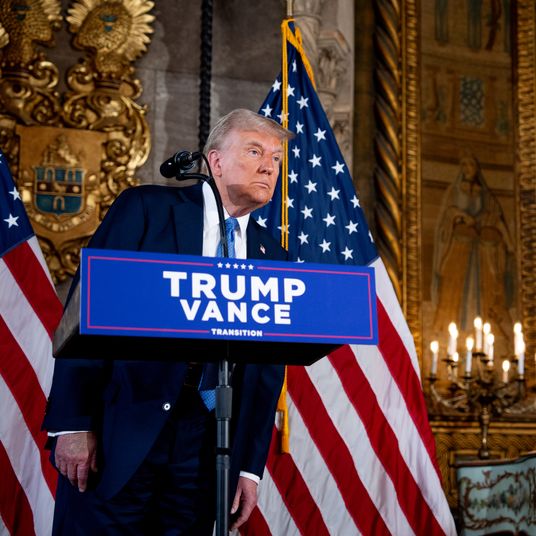Depending on whom you talk to, the allegations of $63.8 million in securities fraud against the Galleon hedge-fund owner Raj Rajaratnam amount to either the biggest insider-trading case since Michael Milken or the largest insider-trading case, ever, period, the end. Twenty-seven people were charged, and nineteen have pleaded guilty. Authorities investigated Rajaratnam’s alleged network of co-conspirators like they were the Sopranos, with 2,400 wiretaps producing 90 hours of tape. Thanks to those recordings and testimony from power brokers at Goldman Sachs, Intel, and McKinsey, the first few weeks of the trial have offered a rare glimpse into the Brioni-collared, Ferragamo-slippered tribe normally hidden behind closed doors. The defense has yet to present its arguments. But as the prosecution prepares to rest its case today, here’s what we learned so far.
Being Astronomically Rich Is All Relative
To the uninitiated, it might seem like Rajat Gupta had it made. The former head of McKinsey had a Harvard MBA, board seats at Goldman Sachs and Procter & Gamble, and a resplendent crown of hair to rival Alec Baldwin’s. But even for established multimillionaires, cash rules everything around them. According to a wiretap between Rajaratnam and ex-McKinsey director Anil Kumar, Gupta was contemplating leaving Goldman for a gig at KKR, a global private equity firm. The two discussed Gupta’s motivation:
“But is it really that he was so greedy for the $12 million that K.K.R. has offered him?” Mr. Kumar asks on the recording.
Sixty-three-year-old bankers take their cues from The Social Network. Lesson learned.
Take Lloyd Blankfein With a Pinch of Salt
One could be forgiven for thinking Rajat Gupta was one of “Lloyd’s boys” after reading Goldman’s press release from March 2010. “Rajat has made important contributions to Goldman Sachs as a board member,” Blankfein said about Gupta stepping down as a director.” His independent advice, keen understanding of the issues, and belief in our culture has had a tremendous impact on our firm.”
It wasn’t until Sir Smiles-a-Lot took the witness stand, “hunching forward with his fist pressed against his mouth,” that we learned Lloyd had “an awareness of — I want to say inkling” that Gupta was under investigation three months prior to his departure.
Another tiny detail Blankfein didn’t clarify until afterward: Investors thought Goldman was doing business as usual in the fourth quarter of 2008. Gupta, who knew otherwise, tipped off Rajaratnam, allowing him to sell millions of stock before the price took a dive. On the stand, Lloyd explained what investors who weren’t privy to personal phone calls from Gupta thought at the time:
Why was that unusual?
Hedge Funds Could Show Machiavelli a Trick or Two
Don’t let Raj Rajaratnam’s weeble-shaped figure fool you. He’s slicker than he looks. The prosecution says Rajaratnam knew just how to motivate power players into spilling proprietary secrets. Once they’d spilled, he knew how to get them to spill more. He praised them, pitted them against each other when he wanted more, and most important, massaged each node in his network of insiders to prey on their weakness.
With former beauty queen Danielle Chiesi, who pleaded guilty in January, Raj tried flirting and flattery. Chiesi has claimed she found physical ecstasy from the mere act of insider trading, perhaps because it allegedly involved sleeping with sources like IBM executive Robert Moffat. In a wiretap discussing keeping quiet about the insider info, Rajaratnam made her feel special by insinuating that hot damn, the old broad still had it:
Raj’s strategy must have worked, because she ended the tête-a-tease with “I love you.”
With Kumar, the ex-McKinsey director who also pleaded guilty, Rajaratnam would giveth and then taketh away. After Kumar tipped Raj off to chip-maker AMD’s plans to acquire another company, Kumar said Raj told him:
But when Chiesi, who had an intimate relationship with AMD CEO Hector Ruiz, began bringing in better intel, Raj’s well of praise ran dry. Kumar testified that Rajaratnam told him:
If Kumar wanted to get back in Raj’s good graces, the Galleon CEO had a suggestion: tell Ruiz he knew about the relationship with Chiesi. Presumably that way Chiesi would stop spreading stock tips that were supposed to be for Raj’s eyes only. You spell that strategy “P.I.M.P.”
How to Fake an E-mail Trail in Three Easy Steps
This one is downright instructive. On a wiretap from April 2008 between Rajaratnam and Kris Chellam, managing partner of Galleon’s “Special Opportunities Fund,” Raj explained how to create an e-mail trail that would make it look as though insider information had been obtained legitimately. Step one: while your tipsters are procuring you tips, start a corporate e-mail chain about the company in question that you can later refer to in court, should it come to that. Raj suggests opening with, “The stock looks cheap right?”
Once they respond, write back pretending to assign someone on the up-and-up to look into the company and its competitors. Based on that perfectly legal info you “gathered,” e-mail again and say you think it’s a solid buy. At the end of the tutorial, Chellam expressed his admiration: “Oh that’s good.”
Wall Street Avoids E-mail Like the Plague
For all the hoopla about high-frequency trading, it seems banking bigwigs prefer to keep their records and personal correspondence more antiquated. E-mails are subpoena-bait forever, but the quaintly old-school voice mail won’t come back to haunt you. Even before regulators started mining e-mails for indictment gold, Goldman was known for its love of voice mail, and Lloyd Blankfein testified during the trial that he far prefers audio messages to e-mail.
Thanks to a scuffle over whether testimony from former Galleon employee Adam Smith was admissible, we also know that Raj Rajaratnam was similarly old-fashioned, preferring a “little black book,” to a BlackBerry. Although the judge barred prosecutors from offering it as evidence, court documents reveal that Smith, who pleaded guilty to insider trading, testified to seeing Rengan Rajaratnam take “a little black book and notebooks” from his older brother Raj’s office on the day he was arrested. What was in them that Rengan was so concerned about? “Rajaratnam’s charitable donations and real property holdings” to assist with his bail, says the family lawyer. Totally. Records of charity donations are the first thing we’d remove before the Feds showed up too.
A Scarlett I Isn’t the End of the World
Good news for those nineteen defendants who have already pleaded guilty. They might have a chance to insider trade another day. Take, for example, Roomy Khan, a former Galleon employee, who pleaded guilty in 2009 to passing along a tip about Blackstone’s takeover of the Hilton hotel chain — a little tidbit that netted Rajaratnam $4 million in a single day. But that wasn’t the first time she was convicted for crimes of finance. Khan was also found guilty of wire fraud back in 2001 for faxing confidential reports about pricing and sales on microprocessors to Rajaratnam while she was working for Intel. After paying $120,000 restitution and serving six months home detention, she went back to work.
Those Business-School Connections Pay Off. Literally.
It’s true what they say, business school is all about the networking. It’s probably hard to throw a stone on Madison Avenue in midtown without hitting a Wharton grad. But three graduates of the very same Wharton class of ‘83 all found themselves indicted in the Galleon case: Rajaratnam, Rajiv Goel, former managing director at Intel, and Anil Kumar, former director at McKinsey. Both pleaded guilty after making Rajaratnam millions. Another classmate told the Financial Times, that back then ethics classes, so popular in b-schools nowadays, were almost entirely absent from the Wharton curriculum.





























